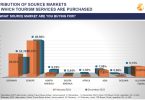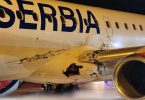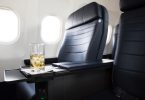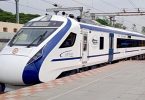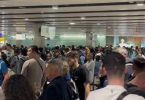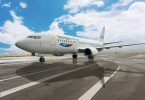LONDON, England – Heathrow has today revealed the results of the seventh quarterly Fly Quiet League, which covers airlines’ performance from January to March 2015.
Track keeping – tracking the proportion of departures that flew outside defined noise preferential routes – is now included in analysis of the results for the League table for the first time since 2013. In 2014, track keeping was impacted by airspace modernization trials in support of Government proposals for the Future Airspace Strategy which Heathrow took part in, and as such, the metric was not included in Fly Quiet league results. The inclusion of this metric once more has resulted in several shifts in the league table.
The overall success story remains Cathay Pacific, an airline which has seen consistent improvements in its performance throughout the history of the Fly Quiet league. This quarter, the Hong Kong airline has gone up three places, to take its place in the top ten performers. KLM is now in 9th place, going up 7 places from the previous quarter. The top three performers, British Airways short haul, Virgin Atlantic Little Red, and Aer Lingus, remain the same.
Following Heathrow CEO John Holland-Kaye’s letter to all airlines failing to meet Heathrow’s CDA standards, and closer technical cooperation between Heathrow and airlines since the end of 2014, overall red score violations in this metric have fallen by 3 compared to the year before. A particular success story in the implementation of CDA has been Polish airline LOT, which has improved its adherence of the procedure from 50% at the start of the Fly Quiet League to 85% today.
Given its increased use of the quieter A320 fleet, Finnair has shown an improvement in its Chapter number scores this quarter, and turned its rating to amber from red last year.
Heathrow has asked airlines to adhere to their scheduled daily night flight arrival times, taking into account the need for local communities to have predictable noise respite during these sensitive hours. The number of airlines adhering to their schedule has remained relatively static over the course of the Fly Quiet Program, however, airlines continue to breach the operational schedule targets each quarter. These breaches do not impact the overall number of flights operating in these early morning hours in each season, as this is legally restricted by the Government. Heathrow’s technical team is actively engaging with the airlines who have a red score in this metric to improve their performance.
Matt Gorman, Heathrow’s Director of Sustainability and Environment said, “Heathrow’s Fly Quiet League is a unique initiative that has produced real results. We know we can always do more to reduce noise and that is why we have committed to this open, and transparent tracker of noise performance that not only allows us to celebrate best practice but also to point out where we need to work with airlines to improve their performance.”
The Fly Quiet Program forms part of Heathrow’s wider noise action plan to tackle aircraft noise. Due to Heathrow’s mix of strict operating restrictions and noise– reducing incentives, aircraft that airlines use at Heathrow are on average around 15% quieter than the global fleet of those airlines.





